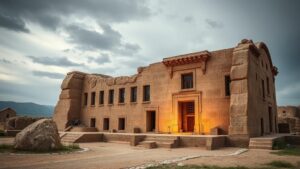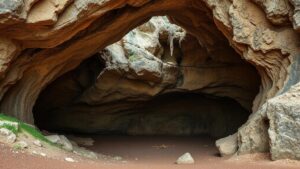Searching for the true purpose of the mysterious “Desert Eyes” in the Middle East.
Searching for the True Purpose of the Mysterious Desert Eyes in the Middle East
The term Desert Eyes refers to unique geological formations and enigmatic structures scattered across various regions of the Middle East, particularly in Saudi Arabia, Jordan, and Iraq. These circular formations have sparked curiosity among historians, archaeologists, and researchers, leading to debates encompassing their origins, functions, and significance. This article delves into the intriguing characteristics of these formations, their potential purposes, and the ongoing investigations into their historical context.
Understanding the Desert Eyes
Desert Eyes are predominantly characterized by their large, circular shapes that can stretch from a few meters to over 20 kilometers in diameter. Located primarily in arid landscapes, they exhibit a distinct pattern of concentric rings and trenches. First documented in the early 20th century, there have been numerous theories about their creation. Some researchers attribute these formations to ancient volcanic activity, while others suggest they are remnants of long-lost civilizations.
Geological Insights and Theories
Geological experts suggest several theories regarding the formation of the Desert Eyes. two main hypotheses include:
- Volcanic Origin: Some scientists posit that the Desert Eyes were created due to volcanic activity. This theory is supported by the presence of basaltic rocks and other volcanic materials surrounding many of these structures.
- An Ancient Civilizations Mark: Alternative theories propose that these formations are the creation of ancient cultures, possibly serving as astronomical observatories or religious sites. The potential alignment with celestial bodies has spurred interest in this perspective.
Historical Context and Cultural Significance
Historically, the Middle East is rich in cultural heritage, with ancient civilizations such as the Sumerians, Babylonians, and Nabataeans making significant contributions to agriculture, astronomy, and architecture. Desert Eyes may provide insight into these societies. For example, the Nabataean city of Petra (established around 5th century BCE) showcases how ancient cultures utilized landscape features for practical and ceremonial purposes. Some suggest that the Desert Eyes could have played a similar role, perhaps marking territory or serving as ritualistic sites.
Current Research and Expeditions
Recent studies have utilized modern technology such as aerial photography and satellite imaging to map and analyze these formations. 2020 project led by the University of Berlin successfully documented over 400 Desert Eyes in Saudi Arabia alone, emphasizing their vast distribution across this region. Some key findings from ongoing research include:
- Identifying potential trade routes aligned with the Desert Eyes.
- Uncovering artifacts in proximity to these structures that indicate human activity.
Significantly, the study of the Desert Eyes has implications beyond archaeology; it intersects with contemporary issues such as land use, environmental conservation, and tourism management in the Middle East.
Addressing Misconceptions
Despite their intriguing nature, misconceptions about the Desert Eyes abound. Some commonly held beliefs include:
- The idea that these formations are purely man-made structures without geological roots has been widely debunked.
- Claims that the Desert Eyes functioned entirely as military installations or surveillance points lack substantial historical evidence.
By recognizing these misconceptions, future studies can focus on more nuanced interpretations of the Desert Eyes and their place in the broader narrative of Middle Eastern history.
Actionable Takeaways
The search for the true purpose of the Desert Eyes is an evolving field of study that invites further exploration. Here are several steps for those interested in engaging with this topic:
- Stay updated on archaeological studies and findings related to the Desert Eyes and other unique geological features.
- Consider participating in fieldwork opportunities as educational programs increasingly look for volunteers.
- Engage with local historians and archaeologists to deepen understanding of the cultural significance of these structures.
The Desert Eyes represent not only a fascinating geological curiosity but also a significant piece of the Middle East’s rich historical tapestry. Further research might one day unveil the full story behind these mysterious formations and how they shaped the lives of those who once inhabited the region.



